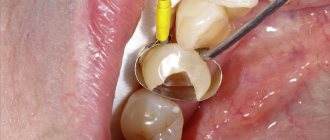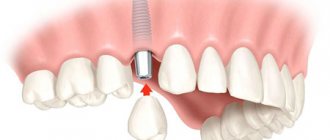| [organizational and legal form, name of organization, enterprise] | I approve [position, signature, full name of the manager or other official authorized to approve the job description] [day month Year] M.P. |
Job description of a dental technician [name of organization, enterprise, etc.]
This job description was developed and approved in accordance with the provisions of the Labor Code of the Russian Federation, the Unified Qualification Directory of Positions for Managers, Specialists and Employees, section “Qualification characteristics of positions of employees in the field of healthcare, approved. Order of the Ministry of Health and Social Development of the Russian Federation dated July 23, 2010 N 541n, Standards for the free issuance of sanitary clothing, sanitary footwear and sanitary supplies to employees of institutions, enterprises and healthcare organizations, approved. Order of the USSR Ministry of Health dated January 29, 1988 N 65, List of industries, workshops, professions and positions with hazardous working conditions, work in which gives the right to additional leave and a shortened working day, approved. Resolution of the State Committee for Labor of the USSR and the All-Russian Central Council of Trade Unions of October 25, 1974 N 298/P-22, and other regulations governing labor relations in the Russian Federation.
Job responsibilities
Dental Technician:
2.1. Manufactures various types of artificial crowns, including metal-ceramics, simple post teeth designs, various bridge designs, removable plate and clasp dentures, orthodontic and maxillofacial structures.
2.2. Prepares dental equipment and dental laboratory equipment for work, monitors their serviceability and correct operation.
2.3. Provides first aid in emergency situations.
What should a dental technician be able to do?
What a dental technician does requires high qualifications and compliance with certain requirements. Here are some of them:
- presence of specialized higher or secondary specialized education in the field of dentistry;
- a valid medical record;
- no medical contraindications.
There are serious health requirements for representatives. In this regard, persons with the following types of diseases cannot work according to their profile:
- impaired finger motor skills;
- chronic infectious diseases;
- epilepsy;
- nervous disorders;
- mental illness;
- visual and hearing impairments;
- dermatological diseases.
Rights
A dental technician has the right:
3.1. For all social guarantees provided for by law.
3.2. Require the management of the enterprise to provide assistance in the performance of their professional duties and the exercise of rights.
3.3. Require the creation of conditions for the performance of professional duties, including the provision of the necessary equipment, tools, a workplace that complies with sanitary and hygienic rules and regulations, etc.
3.4. To pay additional expenses for medical, social and professional rehabilitation in cases of health damage due to an industrial accident.
3.5. Get acquainted with the draft decisions of the enterprise management concerning its activities.
3.6. Submit proposals for improvement of the organization and methods of work performed by the enterprise management for consideration.
3.7. Request personally or on behalf of your immediate supervisor documents, materials, tools, etc., necessary to perform your job duties.
3.8. [Other rights provided for by labor legislation ].
Where to study to become a dental technician
You can get the necessary education at a medical college. And you can enroll in your chosen specialty only after the 11th grade of school. The duration of training is about three years. A dental technician can also study at a higher educational institution, where more in-depth training in the field will be offered.
Due to the fact that a dental technician is a medical professional, he needs to regularly improve his qualifications, master new working methods and the capabilities of innovative materials.
Obstetrician-gynecologist Obstetrician-gynecologist. Job description.
1. General provisions 1.1. An obstetrician-gynecologist belongs to the category of medical specialists and is directly subordinate to _________________________________. (position of immediate supervisor) 1.2. A doctor who has completed specialization in obstetrics and gynecology or has experience in this specialty is accepted for the position of obstetrician-gynecologist. 1.3. An obstetrician-gynecologist is hired and quits ____ __________________. (position) 1.4. An obstetrician-gynecologist is obliged to apply in practice the principles of scientific organization of work, actively use electronic computing and medical-diagnostic equipment in relation to the profile of his activity, be able to navigate modern scientific and technical information, effectively use it to solve practical problems, and show initiative. - initiative, integrity and conscientiousness in work, promote a healthy lifestyle and follow its principles. 1.5. An obstetrician-gynecologist must know: - the basics of healthcare legislation and directive documents defining the activities of healthcare authorities and institutions; — organization of obstetric and gynecological care in the country, organization of ambulance and emergency care; — maternal and perinatal mortality rates and measures to reduce them; — basics of topographic anatomy of body regions and, first of all, the anterior abdominal wall and abdominal cavity, retroperitoneal space, pelvis and urogenital region in normal and pathological conditions; — the main issues of normal and pathological physiology, respectively, in healthy women and in obstetric and gynecological pathology; — the relationship between the functional systems of the body and the levels of their regulation; — physiology and pathology of a woman’s menstrual function; — physiology and pathology of pregnancy, childbirth and the postpartum period, risk groups; — causes of pathological processes in a woman’s body, mechanisms of their development and clinical manifestations; — the influence of production factors on the specific functions of the female body; — physiology and pathology of the hemostatic system, indications and contraindications for transfusion of blood and its components; — the basics of water-electrolyte metabolism and the acid-base state of the blood, possible types of their disorders and principles of treatment; — general and special research methods in obstetrics and gynecology, including the functional state of the ovaries; — basics of the use of endoscopy and x-ray radiology for the examination and treatment of gynecological patients; — issues of asepsis and antiseptics in obstetrics and gynecology; — basics of immunology and genetics in obstetrics and gynecology; — principles, techniques and methods of pain relief in obstetrics and gynecology, the basics of intensive care and resuscitation in women and newborns; — basics of infusion therapy in obstetrics and gynecology, characteristics of blood products and blood substitutes; — basics of pharmacotherapy in obstetrics and gynecology; — principles of preoperative preparation and postoperative management of patients, rehabilitation methods; — basics of the pathogenetic approach when conducting therapy in obstetrics and gynecology; — basics of physiotherapy and physical therapy in obstetrics and gynecology, indications and contraindications for sanatorium treatment; — basics of rational nutrition and principles of diet therapy in obstetric and gynecological practice; — new modern methods of prevention and treatment of obstetric and gynecological pathology, as well as unplanned pregnancy; — basics of oncological vigilance for the purpose of prevention and early diagnosis of malignant neoplasms in women; — issues of temporary and permanent disability, medical labor examination in obstetrics and gynecology; — organizing and conducting clinical examinations of women, analyzing its effectiveness; — features of the sanitary and epidemiological regime in the departments of the obstetric and gynecological hospital, in the antenatal clinic; — indications for hospitalization of pregnant women and gynecological patients; — equipment and facilities for operating rooms and intensive care wards, safety precautions when working with equipment, surgical instruments used in various obstetric and gynecological operations; — principles of working with monitors; — fundamentals of legal law in obstetrics and gynecology; — issues of organizing the civil defense medical service; — prevention, diagnosis, clinic and treatment, be able to diagnose and provide the necessary assistance in the following emergency conditions: traumatic shock, acute blood loss (including premature placental abruption), eclampsia, acute cardiovascular and respiratory failure. 1.6. An obstetrician-gynecologist must be able to: - obtain information about the course of pregnancy and the disease; — identify risk factors for the development of one or another obstetric and gynecological pathology and organize preventive measures; - apply objective methods of examining a pregnant woman, a patient, to identify general and specific signs of a gynecological disease or pregnancy complication; — assess the severity of the patient’s condition, determine the volume and sequence of resuscitation measures; — provide the necessary urgent assistance in case of emergency conditions; — determine the need to use special research methods (laboratory, radiological, endoscopic, functional), interpret the data obtained; — identify early signs of pregnancy, determine its timing, fetal position, pelvic size; — determine the indications for hospitalization of a pregnant or gynecological patient, organize hospitalization in accordance with the woman’s condition; — draw up a differentiated management plan for a pregnant woman and carry out its correction over time; — develop a plan for preparing the patient for emergency or planned surgery, determine the degree of disruption of homeostasis, and prepare all functional systems of the body for surgery; — determine the blood type and perform intravenous or intra-arterial blood transfusion, reinfusion; identify possible transfusion complications and carry out the necessary treatment and preventive measures; — apply, according to indications, an adequate method of pain relief in obstetric and gynecological practice; - resolve the issue of the patient’s ability to work; — maintain medical documentation, ensure continuity between treatment and preventive institutions; - prevent unplanned pregnancy; — carry out clinical examination and evaluate its effectiveness; — analyze the main performance indicators of a medical institution; — carry out sanitary educational work; — establish the duration of pregnancy, assess the health status of the pregnant woman, identify possible disorders and carry out a set of dispensary measures; — identify signs of early or late pregnancy pathology (early and late toxicosis, dropsy, nephropathy, eclampsia) and take all necessary measures to eliminate it; — perform external and internal obstetric examination, determine the phase of labor and the position of the fetus, the degree of maturity of the cervix; — carry out physiological childbirth, childbirth with an occipital or cephalic presentation of the fetus; — promptly recognize and carry out childbirth in cases of extensor presentation of the fetus, breech presentation, large fetus and multiple pregnancies; - assess the degree of narrowing of the pelvis, justify the most rational tactics and implement it; — timely determine the indications for cesarean section; — justify the tactics for the transverse position of the fetus and implement it; — justify the tactics of labor management for extragenital diseases; - determine labor anomalies (primary weakness, secondary weakness, rapid and rapid labor) and regulate labor; — establish the cause of obstetric hemorrhage (placenta previa, premature abruption, atonic bleeding) and provide the necessary assistance for this condition; — establish signs of intrauterine fetal hypoxia and provide the necessary assistance; — perform resuscitation measures for asphyxia and birth trauma of a newborn; — assess the course of the postpartum period, identify postpartum complications and combat them; — identify complications of the newborn period, develop therapeutic measures and carry them out; — establish a diagnosis and carry out the necessary treatment for the following diseases: ectopic pregnancy, out-of-hospital abortion, genital tuberculosis, inflammatory diseases of the female genital organs of septic etiology, abnormalities in the position of the genital organs, gonorrhea in women, trichomoniasis of the genitourinary organs, dishormonal diseases, benign venous tumors of the uterus and appendages, malignant tumors of the uterus and appendages. 2. Operations and manipulations 2.1. An obstetrician-gynecologist performs the following operations and manipulations: — colposcopy; — diagnostic curettage of the uterine cavity; — curettage of the uterine cavity during termination of pregnancy; - classic manual; — fetal extraction; - obstetric forceps; - massage of the uterus with its atony; - C-section; - suturing rupture of the cervix, vagina, perineum; — manual separation and release of placenta, manual control of the uterine cavity; — laparotomy for ectopic pregnancy and torsion of ovarian cyst; — puncture of the posterior fornix; — hydrotubation; - amniotomy; - hysterosalpingography; - amputation of the uterus; - targeted biopsy; — removal of a polyp of the cervical mucosa; — catheterization of the bladder; - gastric probing; - siphon enema; - venesection, intravenous infusions, blood transfusion. 3. Job responsibilities 3.1. The main task of an obstetrician-gynecologist is to provide qualified obstetric and gynecological care. 3.2. In accordance with the main task, the obstetrician-gynecologist ensures: 3.2.1 an appropriate level of observation, examination and treatment of women in accordance with the principles of the medical and protective regime and compliance with the rules of medical deontology; 3.2.2 timely provision of maternity leave in accordance with current legislation, sick leave in cases of temporary disability, referral to a medical advisory commission and VTEK; 3.2.3 carrying out sanitary education work among women; 3.2.4 systematically carrying out activities to improve the qualifications of middle and junior medical personnel. 4. Rights and obligations 4.1. An obstetrician-gynecologist is obliged to: 4.1.1 know and be able to apply in practice modern (tested) methods and means of examination, diagnosis and treatment; 4.1.2 conduct daily rounds in the wards together with the midwife (nurse); 4.1.3 participate in rounds of the head of the department and report to him about hospitalized women, and, if necessary, take part in consultations with patients; 4.1.4 participate in the reception of pregnant women, women in labor, postpartum women and patients entering the department during its opening hours; carry out their examination, prescribe the necessary therapeutic and diagnostic measures and fill out medical records in the prescribed manner; 4.1.5 be on duty in accordance with the approved schedule; 4.1.6 transmit to the hospital doctor on duty a list with the names of patients requiring special monitoring; 4.1.7 when contacting relatives in person, provide information about the health status of women in labor, postpartum women and patients, taking into account the principles of maintaining medical confidentiality; explain to relatives and the woman herself the inappropriateness and harm of premature discharge or further hospital stay; 4.1.8 report to the head of the department, and in his absence, directly to the deputy chief physician for the medical unit (or chief physician): - about life-threatening changes in the health status of patients and about all cases of death; — about gross violations of internal regulations by medical personnel and patients; 4.1.9 systematically improve your qualifications. 4.2. An obstetrician-gynecologist has the right to: 4.2.1 prescribe and cancel (previously prescribed by the doctor himself) any therapeutic and diagnostic measures arising from the changing condition of the patient and the availability of diagnostic and treatment capabilities; 4.2.2 check the correctness and timeliness of implementation by nursing and junior medical personnel of appointments and instructions for the treatment and care of women, keeping them in proper cleanliness and tidiness; 4.2.3 discharge and transfer the woman to another department of the maternity hospital or another medical and preventive institution in agreement with the head of the department; 4.2.4 instruct subordinate employees of the department to make proposals to reward these employees or impose disciplinary sanctions on them for individual omissions in work or violation of internal labor regulations; 4.2.5 issue sick leave certificates in accordance with current instructions. 5. Responsibility 5.1. An obstetrician-gynecologist is responsible for violations of the rights of citizens in the field of health care resulting from failure to fulfill or improper performance of his professional duties, in accordance with the legislation of the Russian Federation. 5.2. In the event of a violation of the rights of citizens in the field of health protection due to the dishonest performance by an obstetrician-gynecologist of his professional duties, resulting in harm to the health of citizens or their death, he is obliged to compensate for damage in the amount and manner established by the legislation of the Russian Federation. 5.3. For violation of labor discipline, legislative and regulatory acts, an obstetrician-gynecologist bears disciplinary, material, administrative and criminal liability in accordance with the current legislation of the Russian Federation. Software package “Human Resources Department. Staffing", "Tarification" (tariff lists) from MedSoft Kurchatov for medical institutions will effectively perform the tasks of personnel records, formation of staffing, tariff lists, all document flow, detailed data analysis. This is your personal assistant. More information about the program 'Human Resources Department. Staffing'
General recommendations
The main purpose of a resume is to help you find a suitable job with good wages and comfortable working conditions. To do this, you need to indicate the maximum number of skills and successes in which the recruiter will see benefit for his company. When working with a document, pay attention to the following points:
- Provide information briefly and concisely
. Indicate only the basics, exactly what can attract the employer. - Experience and education, if there is more than one, list in reverse chronological order
. This will allow you to understand what you have been doing lately and what you have been focusing on. - Maximize your professional skills, abilities and abilities. Write honestly
. Do not exaggerate. It is better to additionally indicate that you are very employable and easy to train. - Write correctly
, check your resume in Word or on specialized websites. The questionnaire should be convenient and readable.
Having a photograph will be a big plus, as visual contact enhances confidence and motivates further study of the resume. It is advisable to take a photo against a regular background, classic and not attracting too much attention.
If you encounter such a document infrequently, then a summary is much more reasonable,
Consistently fill out the proposed sections, and do not worry about the fact that your application does not meet accepted standards.
Dental technician salary
The income of a private practice specialist differs from the salary of a technician who works in an organization. The amounts are individual, as they depend on the chosen pricing policy, client base and region of work of the dental technician.
At the same time, a dental technician at a hospital or clinic with an impressive work experience can earn up to 150,000 rubles.
According to online employee search services, a specialist can count on the following salary:
- Minimum
- 20 thousand rubles. - The maximum
is more than 100 thousand rubles.
These salaries are for salaried employees. When working for yourself, a dental technician's salary can increase significantly.
Career growth of a dental technician
Photo source prostooleh/freepik
The profession of a dental technician is popular and relevant, so a qualified specialist will not have difficulty finding a job.
With the proper skills, a specialist can begin independent practice. This is the only option for his career growth, since the profession involves only internal (horizontal) development and improvement of skills.









